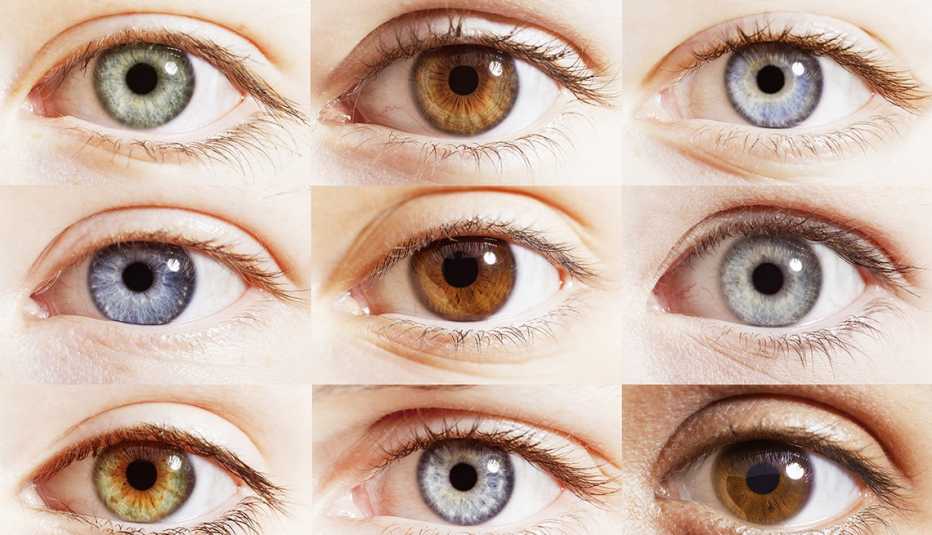AARP Hearing Center


Your eyes are said to be the window to your soul — but they may also be a window to your health. Your eye color may signal a predisposition to certain medical conditions, such as skin or eye cancer. And while actual changes in eye color are rare, they can also indicate an underlying health disorder that needs to be addressed. “Eyes can appear to change color due to an undiagnosed disease, a new medication or even trauma,” says David Silverstone, M.D., a professor of ophthalmology at the Yale School of Medicine. Sometimes, he adds, it’s due to an actual change in the iris, the colored part of your eye, and sometimes it’s due to something going on in another part of your eye that appears to change the eye color.
Here’s a look at what your eye color can mean for your health.
Can eye color predict your health?
Your eye color may offer some clues about how likely you are to develop certain cancers, or certain forms of eye disease, later on. Here’s what the research shows:
Those with lighter eyes have higher skin cancer risk.
A 2022 study published in Cancer Causes and Control that looked at more than 35,000 men found that, compared to people with dark eyes, those with hazel, green or blue eyes had higher risk of basal cell carcinoma and squamous cell carcinoma, two of the most common forms of skin cancer. The men with hazel or green eyes had a 24 percent higher risk of squamous cell carcinoma, while those with blue eyes had a 19 percent higher risk. People who have less pigment in their eyes tend to have less pigment in their skin, which raises risk of skin cancer, says Davinder Grover, M.D., a Dallas ophthalmologist and spokesperson for the American Academy of Ophthalmology. Not surprisingly, other research also suggests that folks with light-colored irises (blue or green) have a higher risk of developing eye melanoma than those with darker orbs.
People with brown eyes have a lower incidence of macular degeneration and diabetic retinopathy.
Age-related macular degeneration (AMD) is an age-related condition in which a part of your retina, the macula, is damaged. This causes you to lose your central vision so that you cannot see fine details. It’s the leading cause of vision loss in people age 50 and older. Diabetic retinopathy is a diabetes-related condition that affects the blood vessels in your retina; over time, it can cause vision loss. It may be that pigment itself offers some protection, Grover says. The American Academy of Ophthalmology says those with brown eyes have a lower incidence of both of these conditions.
People with dark eyes may be more likely to develop cataracts.
You’re not off the hook if you have dark eyes: Research suggests you’re more likely to develop cataracts. Studies have found that people with dark brown eyes have a higher risk of cataracts than those with lighter-colored eyes, according to the American Academy of Ophthalmology. Researchers aren’t sure why this might be true. The authors of one review study speculated that the increased melanin in the irises of brown-eyed people could cause a buildup of heat in the eyes that is linked to cataracts. It’s also possible that the higher risk of cataracts in those with brown eyes may not be directly related to eye color but to where those people live. “We know there is a connection between sun exposure and cataracts, and most people with darker eyes live closer to the equator,” Grover says. More research needs to be done to understand the link, but no matter the color of your eyes, you should wear sunglasses that provide 100 percent protection from all UV light, according to the American Academy of Ophthalmology.



































































More From AARP
8 Major Health Risks for People 50 and Older
A look at the top killers — and how to dodge themIs Caffeine Good or Bad For Your Eyes?
How your morning (and afternoon) cups of coffee affect five eye conditions
How Much Do You Know About Eye Anatomy?
Take our quiz to test your knowledge of this incredible organ